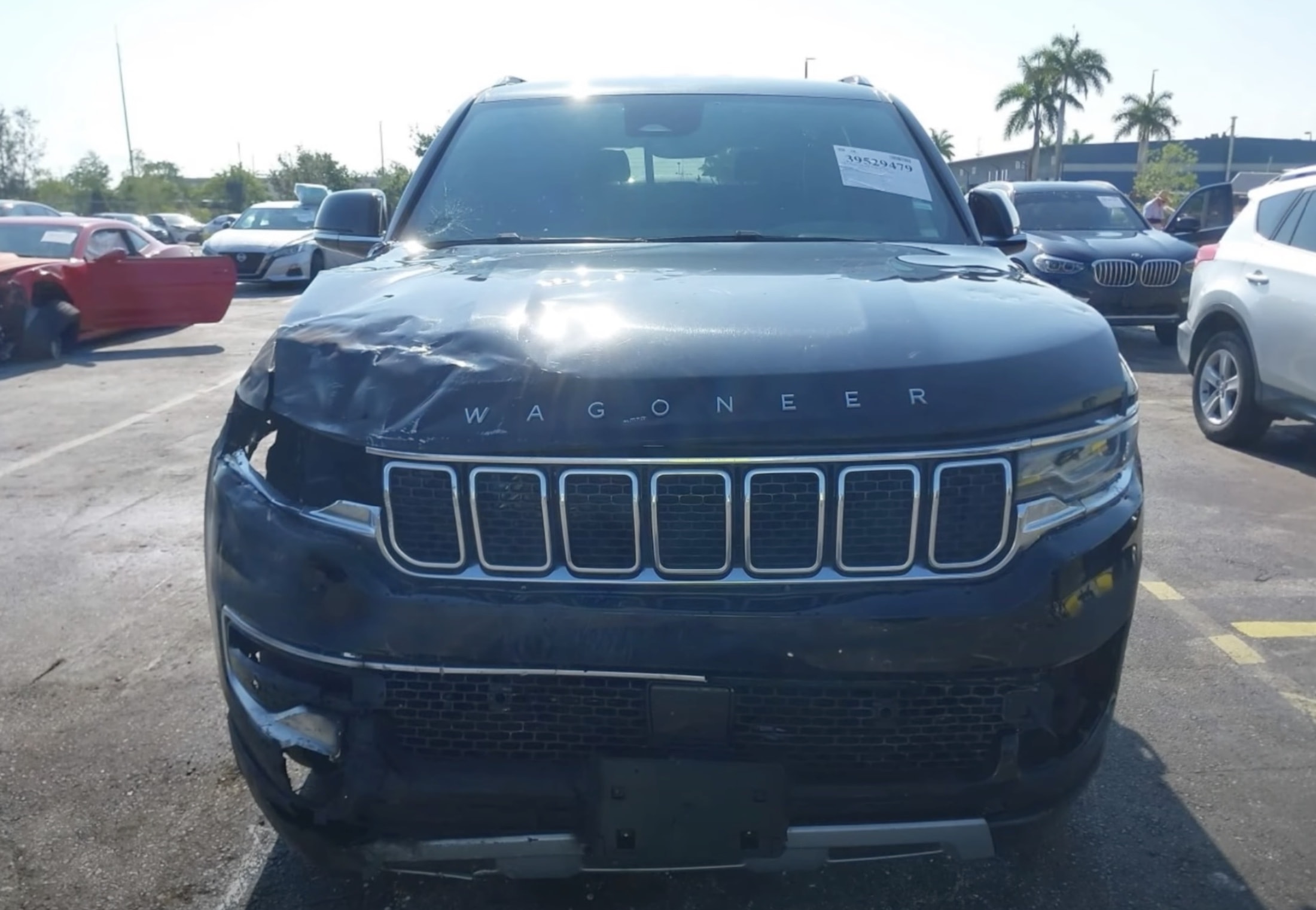A 2022 Jeep Wagoneer Series II, boasting a mere 14,577 miles, should be the pinnacle of luxury and performance. Equipped with a robust 5.7-liter V8 engine generating 392 horsepower and channeled through an eight-speed automatic transmission to all four wheels, it’s a coveted SUV for many.
Typically commanding a premium of between $50,000 and $70,000 depending on features, this particular Wagoneer is a red flag. A seasoned rebuild expert has uncovered a shocking reality: beneath its pristine facade lies a salvaged vehicle with a suspiciously clean title.

A 2022 Jeep Wagoneer, deceptively advertised with a clean Maryland title and a tempting “Buy Now Price” of $21,900, is a wolf in sheep’s clothing. At first glance, the missing headlight, center caps, and questionable bodywork on the driver’s side might raise eyebrows, but they are merely superficial indicators of the vehicle’s troubled history.
The true extent of the damage is concealed beneath a layer of carefully orchestrated deception. The car has been in a severe collision, triggering the deployment of all airbags. To mask this, the seller has cunningly covered the airbag areas with a material that mimics the dashboard.
It was only the expert eye of Scott, a rebuilding specialist, who, after a grueling 42-hour journey to Miami, uncovered the seller’s elaborate ruse. This Jeep Wagoneer is not just a damaged vehicle; it’s a testament to the lengths some will go to conceal a vehicle’s past.
It was a former rental vehicle that had endured a severe collision. The seller had masterfully disguised the damage through bodywork and paint, but closer examination revealed the extent of the deception. The hood, flattened and held together with drywall screws, was a clear indication of the vehicle’s traumatic past.
The frame, visibly pushed back, was a testament to the force of the impact. To further deceive potential buyers, the airbags had been removed, and the steering wheel and dashboard were patched up. Despite multiple attempts to offload the vehicle, its price remained stubbornly low, a red flag of its troubled history.
Despite multiple attempts to sell this damaged vehicle, the asking price never exceeded a modest $17,000, suggesting the seller’s desperation to unload a compromised product. Older images revealed the extent of the initial damage, a horrific scene where the hood was forced into the windshield and the front bumper lay in shattered pieces.

The Wagoneer’s questionable history is a cause for concern. Visual evidence suggests a replacement left front wheel, indicating previous, undisclosed damage that was rectified by the dealer. This raises doubts about the vehicle’s condition and structural integrity.
Compounding the issue is the exorbitant asking price of $21,000, which seems disproportionate to the Wagoneer’s apparent condition. Given the potential value of its parts, one can’t help but wonder if the vehicle is being sold primarily for its components rather than as a whole.
This situation uncomfortably mirrors a recent case involving a severely damaged Toyota Tundra, deceptively presented as repairable. Both incidents serve as stark reminders of the risks associated with purchasing accident-damaged vehicles with unclear repair histories.

